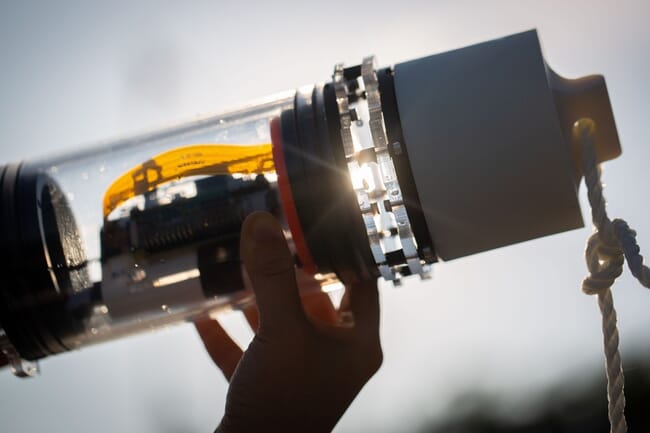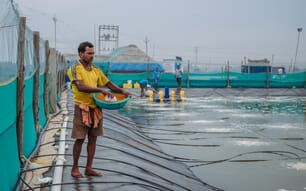
© John Freidah, MIT
Last year, Charlene Xia, from MIT’s Department of Mechanical Engineering, proposed a project to predict and prevent the spread of diseases on seaweed farms.
Already popular in East Asian cuisines, seaweed holds tremendous potential as a sustainable food source for the world’s ever-growing population. In addition to its nutritive value, seaweed combats various environmental threats. It helps fight climate change by absorbing excess carbon dioxide in the atmosphere, and can also absorb fertiliser run-off, keeping coasts cleaner.
As with so much of marine life, seaweed is threatened by the very thing it helps mitigate: climate change. Climate stressors like warm temperatures or minimal sunlight encourage the growth of harmful bacteria such as ice-ice disease. Within days, entire seaweed farms can be decimated by unchecked bacterial growth.
To solve this problem, Xia turned to the microbiota present in these seaweed farms as a predictive indicator of any biological threats.
“Our project is to develop a low-cost device that can detect and prevent diseases before they affect seaweed or livestock by monitoring the microbiome of the environment,” said Xia in a press release by MIT.
The team pairs old technology with the latest in computing. Using a submersible digital holographic microscope, they take a 2D image. They then use a machine learning system known as a neural network to convert the 2D image into a representation of the microbiome present in the 3D environment.
“Using a machine learning network, you can take a 2D image and reconstruct it almost in real time to get an idea of what the microbiome looks like in a 3D space,” says Xia.
The software can be run in a small Raspberry Pi that could be attached to the holographic microscope. To figure out how to communicate these data back to the research team, Xia drew upon her master’s degree research.
In that work, Xia had focused on developing small underwater communication devices that can relay data about the ocean back to researchers. Rather than the usual $4,000, these devices were designed to cost less than $100, helping lower the cost barrier for those interested in uncovering the many mysteries of our oceans. The communication devices can be used to relay data about the ocean environment from the machine learning algorithms.
By combining these low-cost communication devices with microscopic images and machine learning, Xia hopes to design a low-cost, real-time monitoring system that can be scaled to cover entire seaweed farms.
“It’s almost like having the ‘internet of things’ underwater,” explained Xia. “I’m developing this whole underwater camera system alongside the wireless communication I developed that can give me the data while I’m sitting on dry land.”



